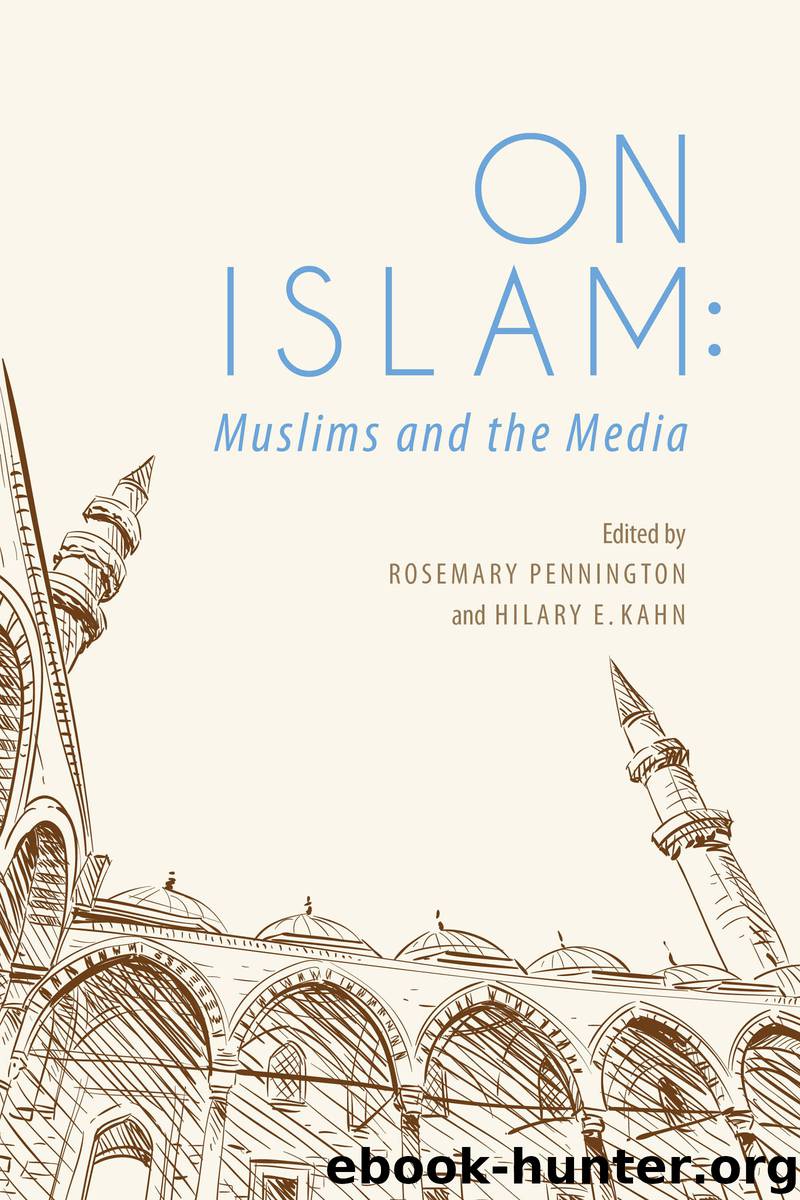On Islam by Rosemary Pennington & Hilary E. Kahn

Author:Rosemary Pennington & Hilary E. Kahn
Language: eng
Format: epub
Publisher: Indiana University Press
Published: 2018-03-13T04:00:00+00:00
“Islamic Terrorism”
The most significant shift in the coverage of British Muslims post-9/11 was in the association with terrorism. While this was clearly the prevailing image of global Islam prior to September 11, British Muslims were not given this label directly.16 Rather, it was Muslims in Britain—exiles, dissidents, and asylum seekers—who were categorized as militant (and thus linked to terrorism). The shift occurred immediately following 9/11, and this has continued to be the dominant topic of coverage over the time period.17
Several common elements in these stories include:
Categorization. Various labels are used to categorize those engaged in what is predominantly defined as “Islamic terrorism.” This might be “bombers,” “violent Muslim fanatics,” or “Islamic fundamentalists,” among others.18 Once people are labeled in this way, action against them does not have to be justified. This is not to legitimize acts of terror but to note the culturally embedded use of language and its implications for interpretation. The interchangeability of these categorizations and their use in the press makes one term easily replaceable with another, so that when “extremist” or “militant” is used, they are infused with ideas of terrorism.
Decontextualization. Rather than providing any historical or political context, the acts of terrorism are clearly linked to Islamic belief. The link between religion and violence was made frequently in coverage of the trial of the perpetrators of a terrorist attack on Glasgow Airport (2007). Here the perpetrators’ Muslimness was emphasized; other motivations, if mentioned at all, were dismissed.
The Process of Othering. The process of Othering takes place by individualizing the perpetrator (and so divorcing him from the wider Muslim community and appeasing any accusations of racism) but then linking him to “radicals” outside the UK who have “brainwashed” the individual. Thus a link is made to Islamic ideology, which is given as the driving force, but it is also Othered by being located outside the UK. There are two significant processes here: characterization, that of the naïve individual who is susceptible to indoctrination, and technology, which is marked out as central to the process of radicalization in terms of “internet jihad” (Times, October 16, 2008, 3).19
This process was explicit in the reporting on Nick Reilly, a Muslim convert with Asperger’s syndrome (and so, it was suggested, vulnerable to conditioning and conversion), who tried to detonate a bomb in a restaurant, but instead locked himself in the bathroom, where the first bomb exploded. He was subsequently arrested. In this case, Reilly was represented as a criminal (e.g., through mug shots) but his networks and contacts outside the UK were emphasized. It was these that had “groomed” him with their “extreme religious and murderous ideology” (Times, October 10, 2008, 22–23).20 Thus the connection was made to Islam, but the responsibility was placed outside the UK. Adopted in articles in both the Sun and the Times, this strategy was evident in the opening sentence of the latter: “A vulnerable Muslim convert was persuaded online by shadowy Pakistan-based extremists into trying to carry out a suicide bomb attack on a busy restaurant” (Times, October 10, 2008, p.
Download
This site does not store any files on its server. We only index and link to content provided by other sites. Please contact the content providers to delete copyright contents if any and email us, we'll remove relevant links or contents immediately.
The Lost Art of Listening by Michael P. Nichols(7165)
Why I Am Not A Calvinist by Dr. Peter S. Ruckman(4047)
The Rosicrucians by Christopher McIntosh(3373)
Wicca: a guide for the solitary practitioner by Scott Cunningham(3044)
Signature in the Cell: DNA and the Evidence for Intelligent Design by Stephen C. Meyer(2879)
Real Sex by Lauren F. Winner(2867)
The Holy Spirit by Billy Graham(2777)
To Light a Sacred Flame by Silver RavenWolf(2678)
The End of Faith by Sam Harris(2636)
The Gnostic Gospels by Pagels Elaine(2399)
Waking Up by Sam Harris(2331)
Nine Parts of Desire by Geraldine Brooks(2281)
Jesus by Paul Johnson(2229)
Devil, The by Almond Philip C(2205)
The God delusion by Richard Dawkins(2189)
Heavens on Earth by Michael Shermer(2189)
Kundalini by Gopi Krishna(2093)
Chosen by God by R. C. Sproul(2055)
The Nature of Consciousness by Rupert Spira(1982)
